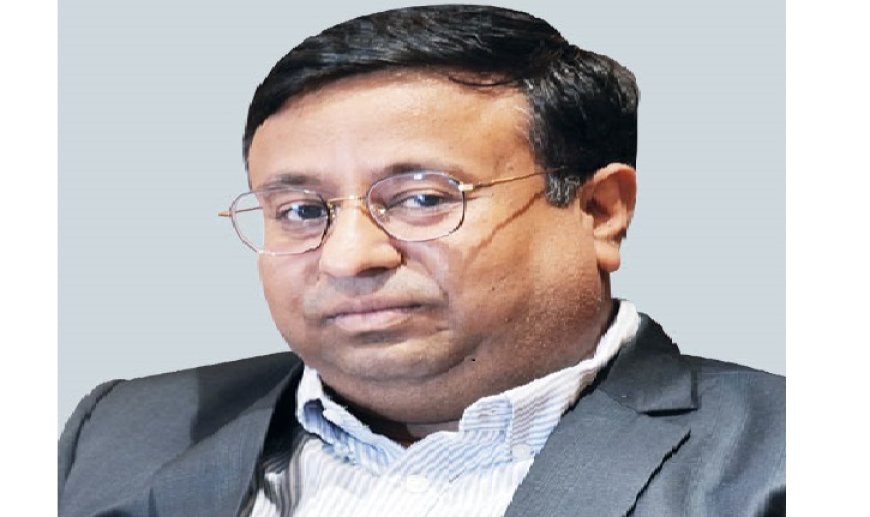The cement demand in India is estimated to touch 420 MT by FY2027
India is the second-largest cement producer in the world and accounted for over 7% of the global installed capacity. Of the total capacity, 98% is produced by the private sector. As India has a high quantity and quality of limestone deposits throughout the country, the cement industry promises huge potential for growth. India's cement production is expected to increase at a CAGR of 5.65% between FY16-22, driven by demands in roads, urban infrastructure and commercial real estate. The consumption of cement in India is expected grow to at a CAGR of 5.68% from FY16 to FY22.

Vishal Kanodia
Managing Director, Kanodia Cement
Can you give an overview of the cement industry and what is the demand and supply scenario presently?
India is the second-largest cement producer in the world and accounted for over 7% of the global installed capacity. Of the total capacity, 98% is produced by the private sector. As India has a high quantity and quality of limestone deposits throughout the country, the cement industry promises huge potential for growth. India's cement production is expected to increase at a CAGR of 5.65% between FY16-22, driven by demands in roads, urban infrastructure and commercial real estate. The consumption of cement in India is expected grow to at a CAGR of 5.68% from FY16 to FY22.
At present, the installed capacity of cement in India is 500 MTPA with production of 298 MTPA. PE/VC investments in real estate stood at US$ 3,442 million in the first half of 2022 (January-June 2022). PE/VC investments in infrastructure stood at US$ 2,692 million in the first half of 2022 (January-June 2022).
In the next 10 years, India could become the main exporter of clinker and gray cement to the Middle East, Africa, and other developing nations of the world. India's cement production capacity is expected to reach 550 MT by 2025. The cement demand in India is estimated to touch 420 MT by FY 2027 driven by the expanding demand of different sectors, i.e., housing, commercial, and industrial construction.
As the Government focuses on infrastructure and affordable housing, how do you see the demand for cement industry in the coming years?
Our country is celebrating 'Azadi Ka Amrit Mahotsav' and has entered into 'Amrit Kaal'. The government has earmarked big public investment for modern infrastructure, and this shall be guided by PM GatiShakti and benefited by the synergy of multi-modal approach. The GatiShakti approach is driven by seven engines, namely roads, railways, airports, ports, mass transport, waterways and logistic infrastructure. These seven engines are supported by energy, transmission, IT, bulk water & sewerage and social infrastructure. In the current Budget, the government has focused on major projects like expanding 25,000 km national highways networks. In addition, four multimodal logistic parks, one station-one product, mass urban transport including connectivity to railways (Metro), Parvatmala, river linkage projects, smart city project, connecting 3.80 crore households under Har Ghar Nal Se Jal with an estimated budget of Rs 60,000 crores. Approximately, 80 lakhs houses are to be constructed under PM Awas Yojna with a budget outlay of Rs 48,000 crores, air connectivity through UDAN, Prime Minister development initiative for North-East Region, increase of ticket size house due to Covid-19 in urban and rural area, and many infrastructural and development projects under PP models.
What is the installed capacity of Kanodia Cement and which is your biggest market in terms of sales?
At present, Kanodia Cement's installed capacity is 4.30 MT per annum with their five plants spread over Uttar Pradesh (three in Sikandrabad Dist, Bulandshahr and Amethi) and Bhabhua in Bihar, which cater to the demand of western and eastern UP, Uttrakhand, NCR, Haryana and Bihar. Kanodia Cement is in the process of installation of 2-3 cement units to cater the increasing demand of central and north zone.
Which are your brands and what are the specialities?
Concrete Gold and Bigcem Cement (in HDPE and Adstar packaging) are our products which are available in the market to cater the demand of both normal as well as niche segments of customers. The major features of our products are anti-corrosion, low water consumption, high compressive strength, high resistance to water, anti-crack etc. Above all, our cement is PPC & sustainable.
Many cement companies are reeling under margin pressure and weak demand. What is your opinion?
Due to increasing input cost as well as logistic cost, almost all cement manufacturers are facing the same problems. Specially, the fuel cost of transportation restricts the manufacturers to operate in farther markets and plants are thus underutilised, which increases the fixed cost. The higher cost of cement is affecting the construction works, especially in individual house builder segment and leads to weaker demand.
Hits: 0







